I attended part of a symposium yesterday at Emory’s Michael C. Carlos museum called “The Somewhere Summit, Connecting the Local to the Global in Atlanta Art”. In conjunction with Atlanta Art Now’s 2011 publication, Noplaceness: Art in a Post-Urban Landscape, the summit noted that it would “specifically discuss two related questions: How are artists redefining the idea of place and locality as these concepts shift in an era of rapid geographic, demographic and technological changes, and what does that mean for how Atlanta artists relate to the rest of the world?”
Tommy Taylor’s mural at Elizabeth Street in Inman Park. Photo courtesy Four Coats/an Atlanta Based Mural Project.
The hour long panel talk that I saw featured Anne Collins-Smith, Curator of Collections at the Spelman College Museum of Fine Art; Diana McClintock, Professor of Art History at Kennesaw State University and writer for Art Papers; and Qi Wang, Assistant Professor of Literature, Communication and Culture at Georgia Institute of Technology. It was moderated by Ayokunie Odeleye, a sculptor and arts educator. In depth bios here.
Photo courtesy LuxeCrush‘s article on Noplaceness. Some of the locally based artists mentioned in the book include Fahamu Pecou, Danielle Roney, Arturo Lindsay, Rocio Rodriguez and Jody Fausett – all shown above.
Luxe notes in the article that the book is “The brainchild of local arts patron Louis Corrigan and his Possible Futures foundation, Noplaceness is a seriously academic book of essays crafted by three noted Atlanta-based art critics—Cinque Hicks of Creative Loafing and Creative Director of Atlanta Art Now, Jerry Cullum, the Atlanta correspondent for Art News and long-time contributor to Art Papers, and co-founder of ArtsCriticATL.com and past art and architecture critic at The AJC Catherine Fox.”
As we walked in, there were reading resource handouts for each panel discussion at the reception desk. I’ll include a few and a couple of my own finds at the end of the post.
Flux Film 010: Rise Up Atlanta. Charlie Brouwer’s large-scale sculpture of ladders lent by Atlanta residents. Watch the clip, it’s charming and poignant. And the site is near where I used to live off Williams Mill Rd, a block from Manual’s Tavern. I just discovered that Charlie  has a studio in Floyd County, VA near where my maternal grandfather was born and grew up. That coincidence demands a visit!
Diana McClintock spoke about Michel Foucault’s ‘relationship of sight’ and said that this is the era of space. Everything is local and global at the same time. “The space in which we live, which draws us out of ourselves….we live inside a set of relations that delineates sites which are irreducible to one another and absolutely not superimposable on one another.” – Of Other Spaces, Heterotopias (1967), by Michel Foucault.
The internet allows for greater access, but she questioned whether it makes local more significant. Does making a place hard to get to – such as bigger and more urban cities – make them more important? She also asked whether the vernacular belongs in higher academic venues. In other words, does Howard Finster’s work remain in the vernacular because his Paradise Garden is based in Summerville, Georgia? Or does his work become universal as it expands its range, which is the goal of all artists.
Lisa  Tuttle, a longtime artist on the Atlanta scene and whom I bumped into at the symposium, asked similar questions in her article on Burnaway earlier this October. A few of them were, “Does the art we make ultimately matter, and does it matter over time? And, if so, to whom?….what connects us and what divides us?”
Tuttle’s art installations often include poetry and reference the local community. Her recent collaboration with writer and activist Alice Lovelace produced a temporary public art project titled Harriet Rising, presented this summer by the Atlanta Office of Cultural Affairs and situated above Underground, Atlanta.
Qi Wang noted that in China, documentary filmmakers are engaging communities in rural villages and emphasizing a connection between the local and social fabric of the regions. A major phenomenon is documented in the film by Chinese-Canadian director Lixin Fan, Last Train Home, in which workers are having to leave their villages to go to urban areas in order to make a living. Are they bringing their customs and art to the urban areas or vice versa?
Zhang Qin in Last Train Home.
Ann Collins-Smith suggested that she forges relationships with artists that extend her own ‘local’ boundaries. Both she and McClintock associated authenticity as a benefit of being locally based, the idea that genuine experience can capture an audience’s attention, existing outside the larger world.
The term global seems to offer many benefits to the artist in terms of more access, a wider scope of available patrons and the ability to go beyond one’s ‘rootedness’. However, the panel agreed that a foundation tied to place may be as important as the notion of fluidity. Qi Wang brought the Buddhist notion of everyday being unfixed into the mix, and the fact that borders are being crossed continually – both literally and metaphorically.
One audience member suggested that the challenge is that global art needs to create local art, and is already doing this by appropriating language and popular Western themes in the work. If the majority of local art is being redefined by Western language and thought, what does that say to us about discrete space or place or cultural distinctions? Artists cross all sorts of perceived, moral and real boundaries, yet they may still focus on a connection to their roots.
Shirazeh Houshiary (Iranian, b. 1955) Image of Heart, 1991. Courtesy Lisson Gallery, London & the artist.
Another question is whether there is, or will evolve, a backlash against more conventional and established art markets. Do communities who support the arts resist inflated pricing (as with the housing market) and will they subsequently focus that support on their immediate region? If like the local farm and food movements, we can similarly build local arts movements, is that necessarily bad or limiting? It doesn’t automatically remove the artist from her larger environment; artists will always seek out other artists and to paraphrase Malraux, each carries the whole of art history on her back.
The artist needs it all; the global, interactive and social networking and the local, to survive in the current economy. The panel debate was relatively theoretical, but in practice there have always been artists who remained stubbornly local. Bonnard comes to mind, an artist who painted from views out windows overlooking his backyard wherever he lived. Fairfield Porter painted, wrote criticism and stuck to his Maine and Southampton, NY environs. Despite the ease of modern travel, contemporary painters have long used place (the Hamptons, Provincetown, Paris) as their specific foundation and inspiration. Is Joan Mitchell less known because she sequestered herself away outside Paris and never returned to the US to live? Probably not.
Pierre Bonnard. Dining Room in the Country, 1913.
Joan Mitchell, Grande Vallée IX 1983-84
Fairfield Porter, Apple Trees, circa 1950. Courtesy the Parrish Art Museum, Southampton, NY.
In her book On Curating: Interviews with Ten International Curators, Carolee Thea states that “Today, artists in the globalized art scene have been repeating a diverse and politically correct discourse about the disappearance of borders and trans-cultural crossovers. Some have experienced voluntary or forced economic or political migration.
…It is not enough for contemporary art to become a spectacle embraced by cities and people in all corners of the world. What matters more is that artists and communities are sharing information and mingling cultures at a rapid pace, reinventing themselves through these interactions and through a renewed engagement with the commonalities of everyday life. Cyber-communications and technological innovations may be accelerating these transmutations, but where they will lead continues to unfold before our eyes.”
Ms. Thea’s 2006 premise that the curator as a mediator is now more necessary than ever before  to “provide a context to enable the public’s understanding” of art may be already outdated. From my own experience (or migration) through promoting work online, I have found patronage both locally and globally. In discussions on various blogs with other artists and in artist coordinated alternative space exhibits, there appears to be a paradigm shift away from the traditional market of the gallerist or curator as middle man, and the evolution (or return) of the artist interacting directly with her supporters. While the experience may not always be situated in a physically local space, the interaction is intimate. That ‘exchange’ is unique to this era and will continue to evolve as technology changes our lives.
Atlanta galleries and museums here.  Recommended readings include:
Kirk Semple, “Indie Filmmakers: China’s New Guerrillas” Â NYTimes 2009
Pnina Werbner, “Vernacular Cosmopolitanism”, Theory, Culture & Society 23 (June 2006) 496-498.
Carolee Thea, “Interview: Mary Jane Jacob”, in On Curating: Interviews with Ten International Curators. (NY: Distributed Art Publishers 2009): 18-27.
Elize Mazadiego, “New Public Art: Redefining or Reconsidering Community-based Art?”, the journal Pros, published by the PhD and MFA programs in the Visual Arts department at the University of California, San Diego.
Article by Maryam Ekhtiar, Department of Islamic Art, The Metropolitan Museum of Art  and Marika Sardar, Institute of Fine Arts, New York University
on Modern and Contemporary Art in Iran.

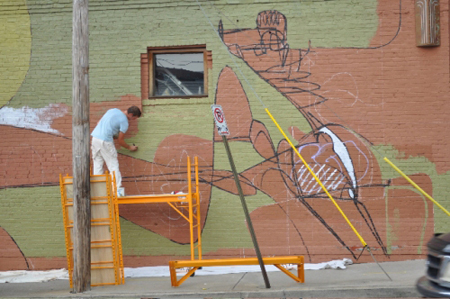
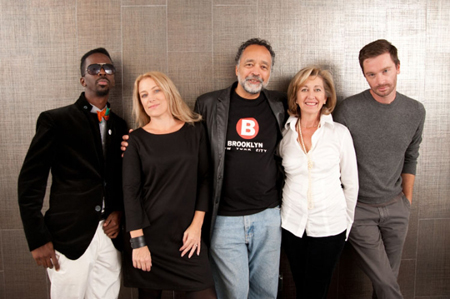
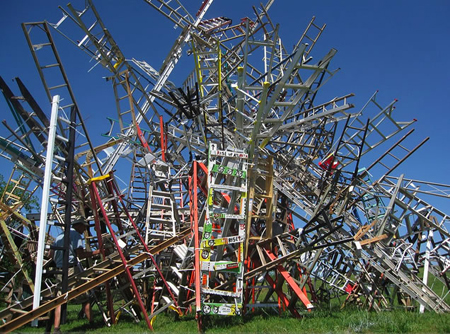
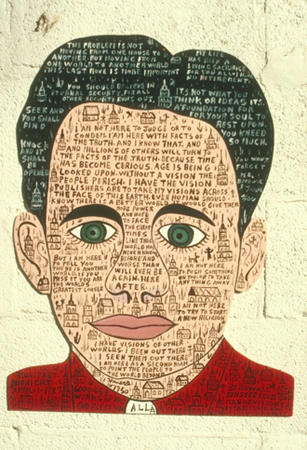
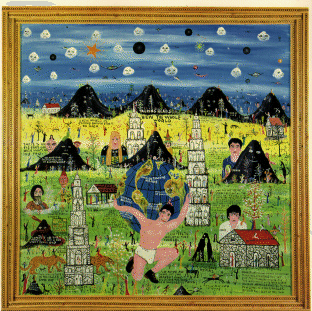
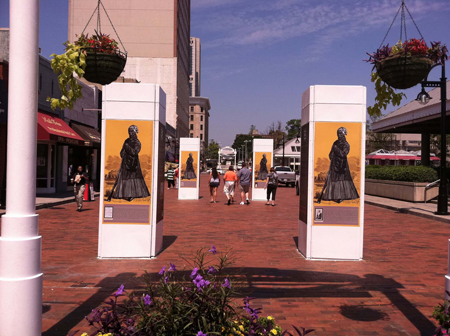
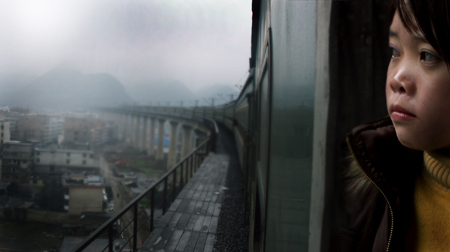

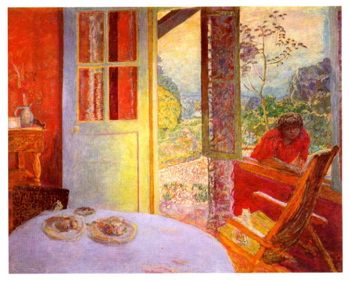
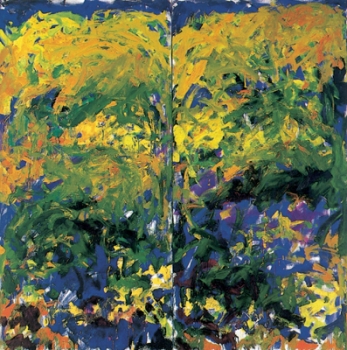
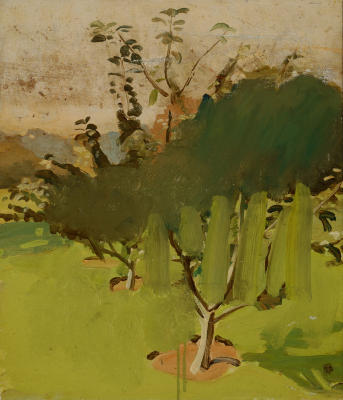
A few years ago I had an idea for a gallery show based not on geographical but virtual propinquity. I had ‘met’ a number of artists and photographers via Flickr and thought it would be interesting to explore the way in which such on-line interaction affected the work produced. It seemed to me that there was as much sharing of experiences and ideas – or at least the potential – as any physically based group.
It never got off the ground unfortunately, because of my own illness at the time and now many of those who might have been involved have moved on.
I was also influenced in this by my previous life as a planner and a paper from back in 1964 by Melvin M Webber called “Urban Place and the Non-Place Urban Realm.” This foreshadowed the many virtual communities that now exist on the Web. It talked about ‘community without propinquity’ with social and economic links becoming more important than the physical neighbourhood.
Ian, there are many online and virtual exhibits springing up. Your idea to aggregate works that resulted from interactivity is intriguing. I know of at least one blog (HyperAllergic) and a curator who did the same thing via Twitter.
As you probably know, some galleries now operate solely online, both to save rent and because their clients are comfortable shopping that way for art. Maybe we should all thank Amazon.
Thank you for introducing me to a fascinating man! From the little I’ve just read, the Berkeley based Webber questioned everything; a man after my own heart. He was evidently ahead of his time too, in his ideas about space and community.